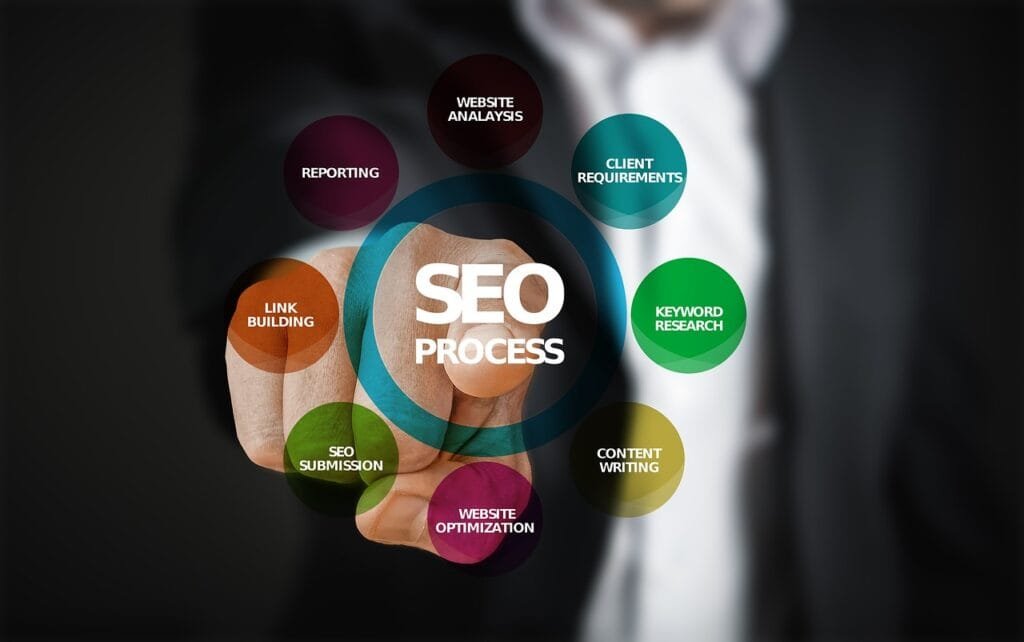Landing pages often serve as the first impression for potential customers in the digital space. As such, these pages not only need to be compelling and clear, but also easily discoverable. For startups, where every interaction can be pivotal for growth, the art of optimizing these landing pages through SEO analytics becomes even more crucial. In this article, we’ll embark on a journey through the intricate dance of SEO analytics and landing page optimization, showcasing how the former can significantly enhance the effectiveness of the latter.
The Symbiosis of Landing Pages and SEO
Understanding the relationship between landing pages and SEO sets the foundation:
a. Landing Pages Defined: These are typically standalone web pages with a specific goal – be it generating leads, promoting a product, or encouraging sign-ups.
b. SEO’s Role: Search Engine Optimization ensures that when users type a relevant query into a search engine, your landing page stands a good chance of appearing in the results.
c. The Intersection: Optimized landing pages lead to better user experience, which in turn sends positive signals to search engines, boosting SEO rankings.
Decoding SEO Analytics for Startups
Before diving into optimization, startups must grasp the basic metrics and what they indicate:
a. Organic Traffic: This shows the number of visitors coming from search engines. An increase can signify effective optimization.
b. Bounce Rate: If visitors leave without interacting, the bounce rate goes up. High rates might indicate a mismatch between user intent and page content.
c. Conversion Rate: Especially vital for landing pages, this metric shows the percentage of visitors who take the desired action, such as signing up or making a purchase.
Keywords: The Heartbeat of SEO
Landing pages need to be optimized around specific keywords or phrases for maximum effectiveness:
a. Keyword Research Tools: Platforms like SEMrush or Google’s Keyword Planner can help startups identify relevant and high-volume keywords.
b. Long-Tail Keywords: These are longer, more specific keyword phrases that can drive more qualified traffic, leading to higher conversion rates.
c. Incorporation: Once identified, these keywords should be naturally integrated into the landing page’s content, meta tags, and URL.
User Experience (UX) and Its Impact on SEO
Google’s algorithms prioritize user-friendly websites. Here’s how UX plays into landing page optimization:
a. Loading Speed: Slow pages can frustrate users. Tools like Google’s PageSpeed Insights can help pinpoint and rectify slowdowns.
b. Mobile Optimization: With an increasing number of searches from mobile devices, a responsive design is no longer just optional.
c. Clear Call-to-Action (CTA): Landing pages should guide visitors towards a specific action. A clear and compelling CTA can significantly enhance user experience and conversions.
Content is Still King
Even on a landing page, the quality of content can make or break the user experience:
a. Engaging Headlines: The first thing visitors see should grab their attention and make them want to stay.
b. Relevant Imagery: Images should be relevant to the content, optimized in size for quick loading, and accompanied by descriptive alt tags for SEO purposes.
c. Benefit-Driven Content: Instead of just listing features, highlight the benefits that users will gain. This can drive engagement and encourage conversions.
Integrating Backlinks into Landing Page Strategy
Backlinks are integral to SEO, even for landing pages:
a. Quality Over Quantity: A few high-quality backlinks from authoritative sites can boost the SEO value of your landing page more than numerous low-quality links.
b. Relevance is Key: Ensure that the sites linking to your landing page are relevant to your startup’s niche or industry.
c. Natural Link Building: Collaborate with industry influencers, guest post on reputable blogs, or create shareable content to organically grow your backlink profile.
The Role of Meta Elements in Landing Page Optimization
These crucial HTML elements provide search engines with information about your page:
a. Meta Titles: The headline that search engines display. It should be compelling, within 60 characters, and include the primary keyword.
b. Meta Descriptions: This brief summary appears below the title in search results. While it doesn’t directly impact rankings, a persuasive description can improve click-through rates.
c. Alt Tags: Descriptive tags for images, they help search engines understand the content of visuals, offering an SEO boost.
The Power of Social Signals in Boosting Landing Page Visibility
While their direct impact on SEO remains debated, the importance of social signals can’t be ignored:
a. Enhanced Visibility: Shareable landing pages can reach an audience beyond your direct followers or subscribers.
b. Building Trust: A strong social media presence and shares from authoritative figures in your industry can build trust with your audience.
c. Indirect SEO Benefits: Increased traffic from social shares can lead to more user engagement and potential backlinks, offering an indirect SEO boost.
Continuous Testing and Iteration: The Path to Landing Page Excellence
In the digital realm, resting on one’s laurels can quickly lead to obsolescence:
a. A/B Testing: By testing two versions of a landing page, startups can identify which elements resonate more with the audience.
b. Feedback Integration: Use tools or surveys to gather visitor feedback and make continuous improvements.
c. Stay Updated: As user preferences and search engine algorithms evolve, so should your landing page strategies.
Localization: The Hidden Gem in Landing Page Optimization
For startups targeting a global or multi-regional audience, localization can be a game-changer:
a. Localized Content: Ensure your landing page content resonates with the local culture, values, and language nuances of your target region.
b. Geo-Targeting: Use SEO analytics to identify where your traffic is coming from and optimize your landing pages accordingly.
c. Localized Backlinks: Links from local, authoritative sites can significantly enhance the SEO value of your landing page for that particular region.
Importance of Call-to-Action (CTA) in Landing Pages
Every landing page aims to guide users towards a specific action, making CTAs paramount:
a. Strategic Placement: Position CTAs where they’re most likely to catch a user’s attention. Common locations include above the fold, at the end of content, or even as a sticky element that scrolls with the user.
b. Clarity in Messaging: Your CTA should be concise yet descriptive. Instead of generic phrases like “Click here”, opt for more directive language like “Get started” or “Learn more”.
c. A/B Testing for CTAs: Experiment with different CTA colors, shapes, and messages to see which variation drives the most conversions.
The Role of Videos in Landing Page Optimization
Incorporating multimedia, especially videos, can significantly enhance the engagement levels of your landing page:
a. Engaging Content: A well-produced video can explain complex ideas more succinctly than text, holding the user’s attention.
b. SEO Benefits: Hosting videos on platforms like YouTube and embedding them on your landing page can drive additional traffic and improve session durations.
c. Optimize Video Metadata: Just as with text content, ensure your video titles, descriptions, and tags are optimized for relevant keywords.
Trust Signals: Boosting Credibility and SEO
Integrating trust signals can improve both user trust and SEO rankings:
a. Testimonials and Reviews: Showcase genuine feedback from satisfied customers or notable industry figures.
b. Certifications and Badges: If your startup has industry certifications or has been featured in notable media, showcase these badges prominently.
c. Secure Browsing: Ensure your website has an SSL certificate, turning your HTTP into HTTPS. This not only boosts SEO but also assures users that their data is secure.

Related: Check out our free SEO suite

Advanced Analytics: Deep Dive into User Behavior
Beyond basic metrics, delving deeper can provide rich insights:
a. Heatmaps: Tools like Hotjar can provide visual representations of where users most frequently click, move, or scroll on your landing page.
b. User Recordings: These tools can record actual user sessions, giving invaluable insights into user behavior, navigation patterns, and potential points of friction.
c. Integration with CRM: Integrate analytics with your Customer Relationship Management (CRM) system to trace conversions and user interactions further down the sales funnel.
Staying Ahead: Keeping Up with SEO Trends
The digital landscape is ever-evolving. Staying updated ensures your landing page remains optimized:
a. Voice Search: As voice searches become more prevalent, ensure your content is optimized for conversational queries.
b. Artificial Intelligence (AI): AI algorithms, like Google’s RankBrain, are playing an increasing role in search outcomes. Focus on user experience and relevance to cater to these algorithms.
c. Mobile-First Indexing: With Google prioritizing mobile versions of websites, ensure your landing page is not just mobile-friendly, but mobile-optimized.
Conclusion:
Optimizing a startup’s landing page by using SEO analytics isn’t a one-time affair but an ongoing journey of adaptation and refinement. As algorithms change and user preferences evolve, the most successful startups will be those that remain agile, always ready to learn and to adapt. With the right tools, strategies, and mindset, any startup can transform its landing page from a mere digital presence into a powerful engine for growth, conversions, and success.
READ NEXT:
- How to Dominate Google Rankings for Every Type of Loan Service
- Startup Guide to Measuring SEO Impact on Lead Generation
- Linking SEO Analytics with Social Media Strategy for Startup
- The Challenges of Multi-Country SEO in Financial Services
- Localizing Financial Content for Different Markets





















